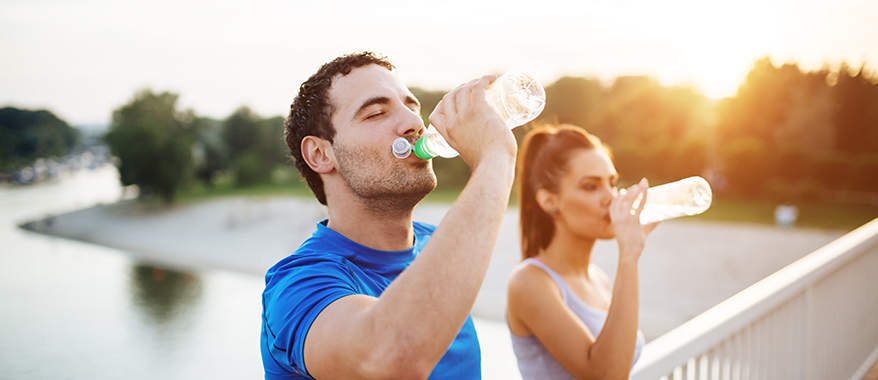Heat Illness: Reducing the risk while enhancing performance

Posted: August 23, 2023
One of the biggest challenges young athletes face is training or competing safely in the heat. Whether you live in a hot climate year-round or not, having a plan will help you prevent heat-related illnesses such as heat exhaustion, heat cramps or heat stroke, all while improving your tolerance and performance in the heat.
How to reduce the risk of heat-related illnesses
Get fit
High aerobic fitness and an appropriate level of body fat can give you a big advantage when it comes to tolerating the heat, reducing heat storage and effectively regulating your body temperature.
Acclimate to the heat
Progressive training in the heat prompts physiological changes that reduce the risk of heat illness and help you to perform better. If you’re traveling to a hotter environment, plan to arrive at least a few days early. Even though full heat acclimatization can take up to two weeks (if you’re not used to it), two to three days can still help. A gradual introduction to practice and competition intensity and duration is also critical.
Wear appropriate clothing
White or other light colored, loose-fitting and breathable clothing designed for the heat is preferable. During preseason training, uniforms and protective equipment should be introduced progressively and reduced appropriately as weather conditions warrant.
Taper your training
Reduce the volume of training during the days preceding a hot-weather competition. This gives your body a chance to recover, so you don’t start the event fatigued.
Hydration tips
Drink plenty of fluids
Stay hydrated with water, sports drinks, juice or milk. Check your urine – it should be light colored. If you’re in the bathroom to urinate every 45 minutes or so, you may be drinking too much.
Drink regularly
Older adolescents can comfortably drink and match sweat losses up to 48 ounces per hour. Younger athletes need and should drink much less. Continue drinking after practice or play to restore any fluid deficit that remains. If you lost a lot of sweat and must train or play again soon, additional fluid intake should begin immediately.
Add salt to your diet
Eat salty foods or drinks before and after you compete in a hot environment, especially if you’re prone to muscle cramps (which are more common in teenagers than younger kids). This helps your body retain the fluid you drink and avoid problems like heat cramps.
Additional ways to reduce the risk of heat illness
Eat plenty of carbohydrates
Working out or competing in the heat causes your body to use more carbohydrates for energy. Try eating bread, cereal, potatoes, rice or fruit ahead of exercising.
Get plenty of sleep
Insufficient sleep increases your susceptibility to heat illness. This can be a challenge when young athletes are away from home.
Avoid heat when possible
Stay in a cool environment as much as possible between training sessions and games. Practice in the morning or early evening when the temperature is lower.
Check medications
Ask your doctor about any medical conditions or medications you’re taking that affect hydration or heat tolerance. If you have had a fever, respiratory tract infection, diarrhea or another illness within the past week, you can be more susceptible to heat-related problems. Talk to your doctor about participation.
Wear sunscreen
A sunburn can increase your susceptibility to heat illness. Use SPF 30 sunscreen or higher on all exposed skin when you practice and play outside.
Know the early signs of heat illness
Athletes, coaches and parents should watch out for early signs of heat illness, including:
- Headache
- Nausea
- Dizziness
- Clumsiness
- Weakness
- Muscle cramps
- Irritability
- Apathy
- Confusion
One or more of these symptoms may be enough to immediately stop activity and seek medical attention. Part of the responsibility also rests with youth sports administrators and governing bodies that control scheduling and setting guidelines for tournament events.
Insufficient recovery time between multiple- and same-day matches also increases the risk for poor performance and heat illness during the next competition.
Onsite cooling capabilities, such as ice packs or ice water immersion, and personnel trained in handling heat-illness emergencies should be at all hot-weather sporting events.
Athletes can train and perform safely in extreme heat by staying SMART.
- Stay hydrated
- Modify activities
- Apply sunscreen
- Recognize warning signs
- Take frequent breaks





